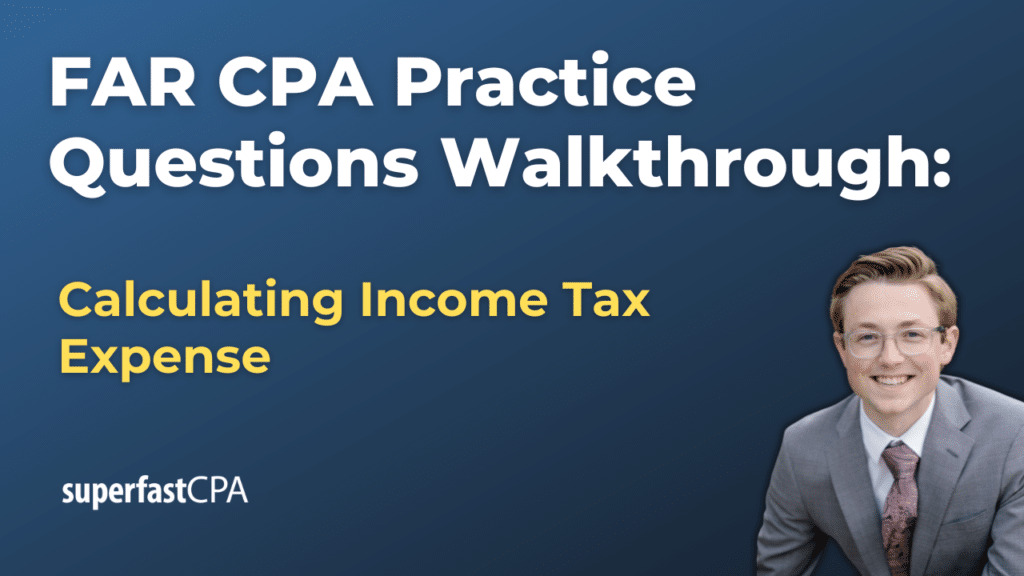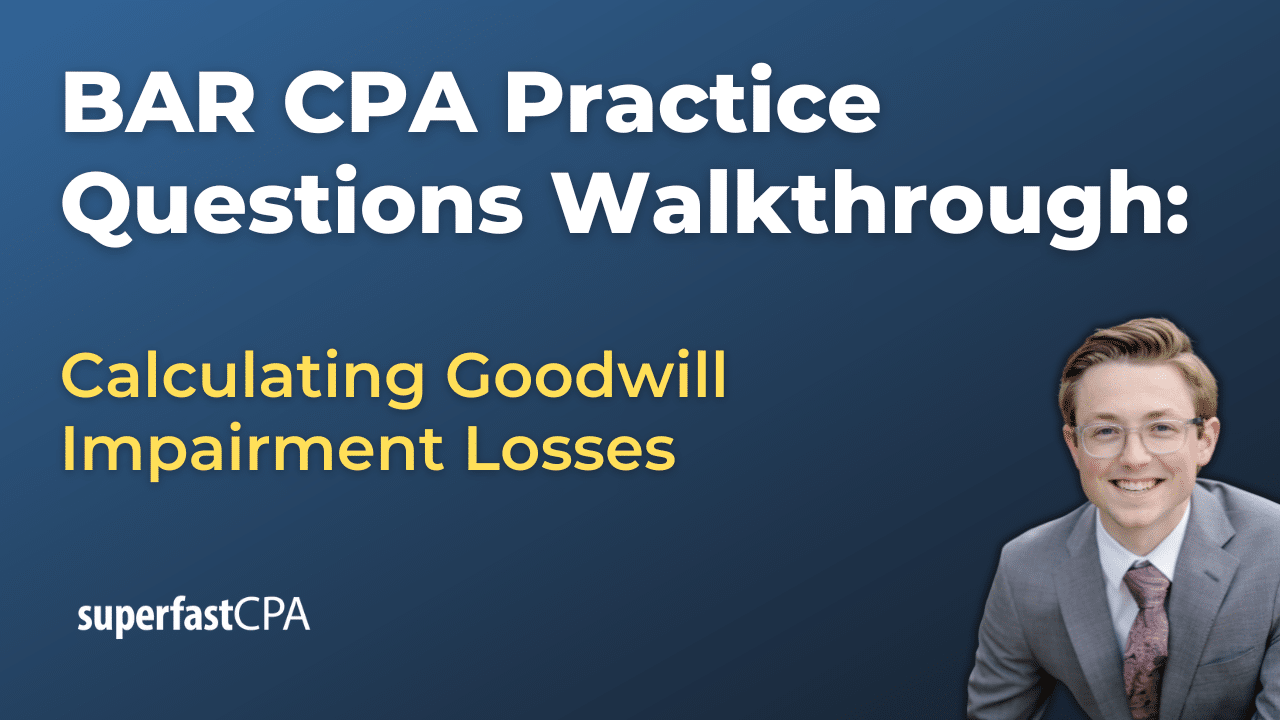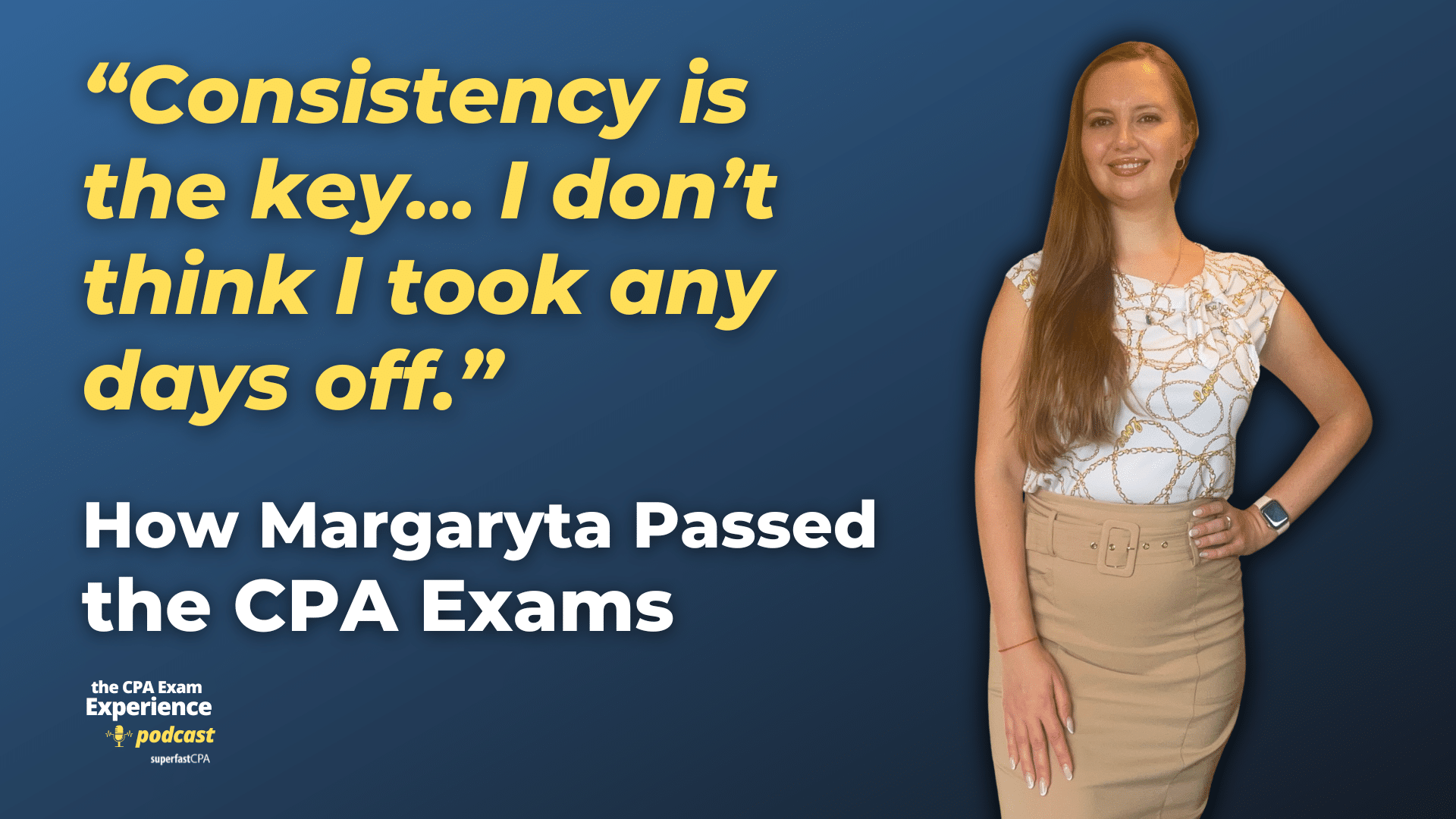In this video, we walk through 5 FAR practice questions about calculating income tax expense and income tax payable/receivable. These questions are from FAR content area 3 on the AICPA CPA exam blueprints: Select Transactions.
The best way to use this video is to pause each time we get to a new question in the video, and then make your own attempt at the question before watching us go through it.
Also be sure to watch one of our free webinars on the 6 “key ingredients” to an extremely effective & efficient CPA study process here…
Calculating Income Tax Expense and Current Taxes Payable/Receivable
Calculating income tax expense and understanding related concepts like current taxes payable and receivable is critical for financial accounting and tax compliance. Below, we’ll break down these calculations with clear explanations and examples, including adjustments for nontaxable and nondeductible items, and how to determine the effective tax rate.
Calculating Income Tax Expense
Income tax expense reflects the total tax cost reported on the financial statements. It includes both current taxes (based on taxable income) and deferred taxes (arising from temporary differences).
Steps to Calculate Income Tax Expense:
- Start with pretax financial income from the income statement.
- Adjust for permanent differences (nontaxable/nondeductible items) and temporary differences (timing differences between book and tax reporting).
- Multiply the adjusted taxable income by the corporate tax rate to calculate current tax expense.
- Add or subtract any deferred tax amounts (based on temporary differences) to determine total income tax expense.
Example:
- Pretax financial income: $500,000
- Adjustments:
- Nondeductible fines: $10,000 (add back)
- Tax depreciation exceeds book depreciation: $15,000 (subtract)
- Taxable income = $500,000 + $10,000 – $15,000 = $495,000
- Tax rate = 30%
Income Tax Expense: $495,000 × 30% = $148,500
Current Taxes Payable
Current taxes payable represent the amount of tax owed to the government for the current period based on taxable income. If no estimated payments were made during the year, this is simply the total tax liability.
Steps to Calculate Current Taxes Payable:
- Calculate taxable income (adjust pretax financial income for permanent and temporary differences).
- Multiply taxable income by the corporate tax rate.
- Subtract any estimated payments made during the year.
Example:
- Taxable income: $400,000
- Tax rate: 25%
- Estimated tax payments: $50,000
Tax Liability: $400,000 × 25% = $100,000
Current Taxes Payable: $100,000 – $50,000 = $50,000
Income Tax Receivable
Income tax receivable arises when a company’s estimated tax payments exceed the actual tax liability. This overpayment is recorded as a receivable, reflecting a refund or a carryforward to future taxes.
Steps to Calculate Income Tax Receivable:
- Calculate total tax liability as above.
- Subtract the tax liability from estimated tax payments made.
Example:
- Taxable income: $300,000
- Tax rate: 20%
- Estimated tax payments: $80,000
Tax Liability: $300,000 × 20% = $60,000
Income Tax Receivable: $80,000 – $60,000 = $20,000
Adjustments for Nontaxable and Nondeductible Items
Permanent differences are items included in pretax financial income but not considered for taxable income. Examples include:
- Nontaxable Items:
- Interest on municipal bonds
- Proceeds from life insurance on key employees
- Nondeductible Items:
- Fines and penalties
- Certain meals and entertainment expenses
- Life insurance premiums for key employees
These items either increase or decrease taxable income permanently, meaning they do not reverse in future periods.
Example:
- Pretax financial income: $600,000
- Adjustments:
- Nontaxable municipal bond interest: $20,000 (subtract)
- Nondeductible fines: $10,000 (add back)
Taxable Income: $600,000 – $20,000 + $10,000 = $590,000
Calculating the Effective Tax Rate
The effective tax rate reflects the company’s actual tax burden as a percentage of pretax financial income. It accounts for permanent differences and provides a clearer picture of the true tax expense.
Formula: Effective Tax Rate = Income Tax Expense / Pretax Financial Income
Example:
- Pretax financial income: $800,000
- Taxable income (after adjustments): $750,000
- Tax rate: 25%
- Income tax expense = $750,000 × 25% = $187,500
Effective Tax Rate: $187,500 ÷ $800,000 = 23.44%
Summary
- Income Tax Expense: Includes both current taxes (based on taxable income) and deferred taxes.
- Current Taxes Payable: The portion of the tax liability unpaid after estimated payments.
- Income Tax Receivable: Represents overpayments of tax.
- Adjustments for Nontaxable/Nondeductible Items: Adjust pretax financial income to taxable income.
- Effective Tax Rate: Reflects the true tax burden by dividing income tax expense by pretax financial income.












